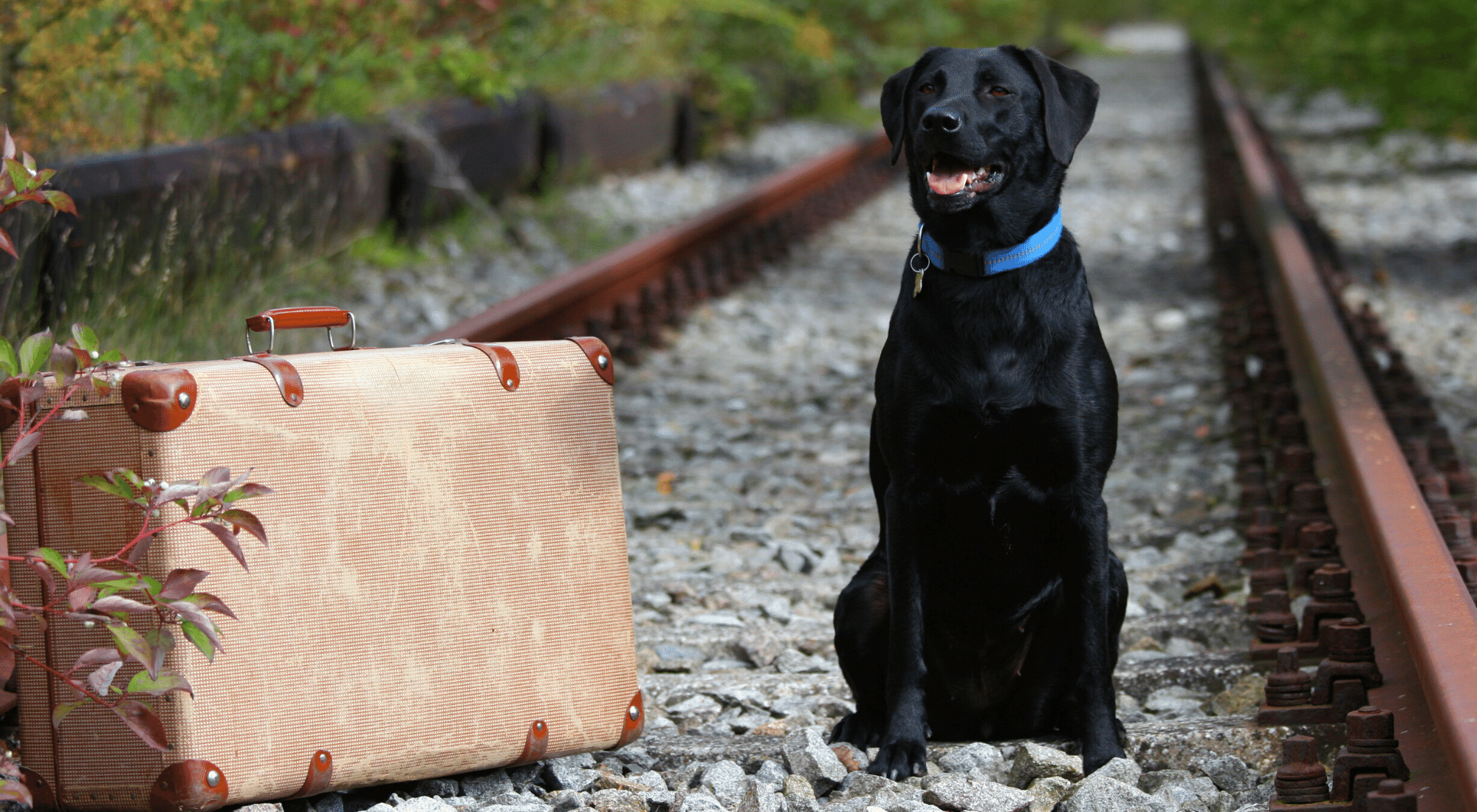How to Air Travel with a Dog: A Complete Guide for Pet Owners
Learn how to air travel with your dog. From pet policies to carrier tips, we cover everything you need for stress-free domestic and international flights.
Air travel can be stressful, even more so when you're traveling with your dog. But with some preparation and knowledge of airline policies, you and your furry family member can enjoy a safe and smooth flight experience. Whether you're flying domestically or internationally, this guide will walk you through everything you need to know, from choosing the right pet carrier to understanding airline policies.
Preparing for Air Travel with Your Dog
Choose the Right Pet Carrier
Your dog's comfort and safety during the flight largely depend on the travel carrier you choose. Airlines typically require pet carriers to fit under the seat in front of you for carry-on pets. Most airlines allow soft-sided carriers, as these are flexible and more likely to meet the size requirements.
When selecting a carrier:
- Ensure it meets airline specifications for size and weight limits. Check your airline’s policy beforehand.
- Your dog should have enough room to stand, turn around, and lie down naturally while in the carrier.
- Look for a durable, well-ventilated carrier to keep your dog comfortable. Options like the Sherpa Travel Carrier are popular among pet owners.
- Add familiar bedding or a small toy to help your dog feel secure.
Get a Health Certificate
Most airlines, especially for international flights, require a health certificate issued by a veterinarian.
The certificate should confirm that:
- Your dog is up to date on rabies vaccinations and free of contagious diseases.
- The dog's age meets airline requirements (typically at least 8 weeks old).
Plan ahead to schedule a vet check-up within 10 days of your flight. For trips to another country, verify entry requirements with the destination country and ensure your dog meets any additional regulations. For instance, high-risk countries for rabies may have stricter rules.
Understand Airline Pet Policies
Policies for traveling with dogs vary depending on the airline, so it's essential to familiarize yourself with the guidelines before booking. Most airlines allow small dogs in the passenger cabin as carry-on pets if they are in an airline-approved carrier. However, for larger dogs, the cargo hold is often the only option.



Check the following details when researching:
- Pet fees for carry-on and cargo travel. Fees range from $50 to $150, depending on the airline.
- Weight limits combined for your dog and the carrier (usually around 20 lbs for in-cabin travel).
- How many dogs are allowed on the same flight. Some airlines have limits, so book early to secure your spot.
Popular airlines like American Airlines and Southwest Airlines provide clear pet travel guidelines on their websites.
Service Animals and Emotional Support Animals
Service animals are allowed to fly with passengers in the cabin at no additional charge, provided they meet specific criteria. Airlines generally require documentation verifying the status of the service animal. Emotional support animals, however, are no longer recognized by most airlines and must now travel as regular pets under the airline’s pet policy.
Preparing for the Airport
To streamline the travel process, follow these tips:
- Arrive early at the ticket counter to check in your pet and present necessary paperwork.
- Keep your dog on a secure collar or harness for safety during security screening.
- At the TSA checkpoint, you'll need to remove your dog from the carrier to pass through the metal detector. Hold them securely during this process.
- Research pet relief areas at the airport. Major airports have designated spaces where your dog can take bathroom breaks before boarding.
Tips for Flying with a Dog
Choose the Right Flight
When selecting flights, consider:
- Direct Flights: Avoid layovers to minimize stress for both you and your dog.
- Midday or Late Evening Flights: These times are often less crowded, which can help your dog stay calm.
- Temperature Considerations: For large dogs flying cargo, midday flights are ideal in colder months, while early morning or late evening flights are better during summer to avoid extreme heat.
Carry Essentials in Your Bag
Pack a small bag with all the essentials your dog may need for the flight, such as:
- Prescription medications and vaccination records.
- Collapsible water bowls and travel-sized food portions.
- Potty pads or waste bags in case of emergencies during the trip.
- Comfort items like a favorite blanket or toy.
Flying with Larger Dogs
If your dog exceeds the weight limit for cabin travel, they’ll need to fly in the cargo hold. While this may seem daunting, airlines like Delta and United Airlines take necessary precautions to ensure pets in cargo are handled with care.
- Use an IATA-approved crate that meets International Air Transport Association standards.
- Label the crate with your dog’s name, your contact information, and their feeding schedule.
- Include a water source attached to the crate for hydration during the flight.
Navigating International Flights with Your Dog
Flying internationally with your dog requires additional preparation. Here’s what you need to know:
- Check Import Requirements: Verify the destination country’s rules regarding vaccinations, health certificates, and quarantine.
- Plan well in advance if your destination is a high-risk country for rabies, as extra documentation may be required.
- Consult the American Veterinary Medical Association (AVMA) for guidance on traveling to specific regions.
For international flights, pack extra documents, including a copy of your health certificate and rabies vaccination records. Some countries, such as those in the European Union, may also require a pet passport.



Upon Arrival at Your Destination
Here are a few key tips to ensure a seamless experience post-flight:
- Visit the pet relief area quickly after arriving to allow your dog to stretch and relax.
- Check into your hotel room and set up your dog’s essentials to make them comfortable.
- Monitor your dog for signs of stress or dehydration, especially if they traveled in the cargo hold.
The Role of Airline Personnel
Don’t hesitate to communicate with airline personnel, including flight attendants and baggage handlers, about any specific concerns you may have. Keep them informed about your dog’s needs so they can provide assistance when necessary.
Why Planning Matters
Your dog is more than a pet—they’re family. Flying with your dog may seem overwhelming at first, but planning helps mitigate the stress. From understanding airline pet policies to carefully selecting your dog’s travel carrier, these steps ensure a smoother trip for your four-legged companion.
By staying informed and taking a few simple precautions, you can make flying with your dog a safe and enjoyable experience for both of you.
Happy Travels!



